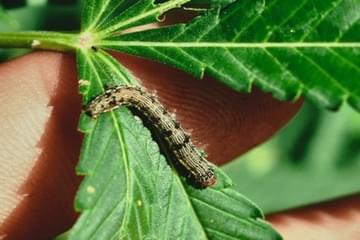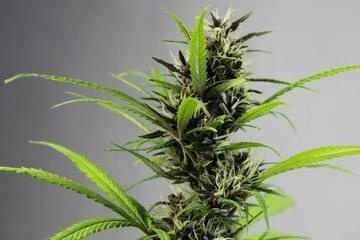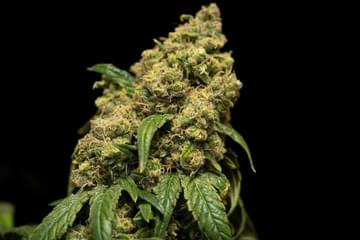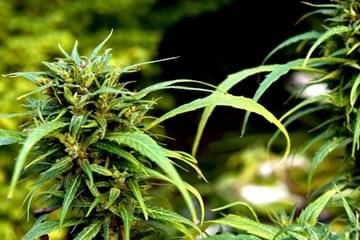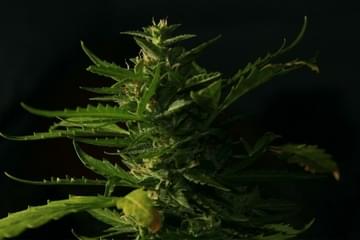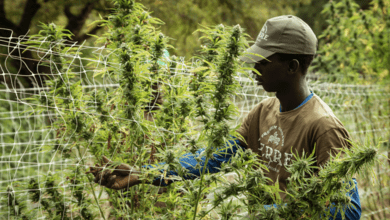
How to Dry & Cure Cannabis
Published on 7/30/20
There's a reason people have been calling cannabis "weed." Just like a weed, cannabis is a naturally voracious grower. As long as you've got nutrient-rich soil, sunlight, water, and a lot of love, your pot plants will climb to the sky and produce gorgeous buds full of resinous THC.
But once your buds are fully grown and ready to harvest, there's still a lot of work to be done before you can roll up and smoke. Your bud still has to dry, cure, and be trimmed for it to start looking like your favorite dispensary dank.
Thankfully, through decades of trial, error, and plenty of smoke sessions, legacy cannabis growers have honed the process of drying and curing marijuana to a science. And while each strain and each individual plant will invariably grow, dry, and cure at different rates, following a set of standard operating procedures will help you get the most flavorful, potent, and gorgeous nugs out of your homegrown ganja. Use our guide to help you learn how to dry marijuana and cure it like a pro.
Why You Should Dry and Cure Your Weed
It may seem like cannabis buds fresh off the vine are ripe for smoking, but while your fresh nugs are packed with cannabinoids and terpenes, they are still full of moisture and don't yet have their distinct taste or smell. To achieve the perfect smoke, you'll need to know how to dry and how to cure marijuana first.
No matter how you go about it, the drying process is all about removing moisture from the plant. To do this properly, it's best to construct a dry room with temperature, humidity, and light control. Every bud that makes it to market has gone through some sort of drying process.
The same consistency cannot be said for curing weed. The curing process is meant to bring out the most potency, flavor, and aroma out of each nug. Proper curing done in airtight jars and stored in dark rooms is like aging a fine wine. While freshly dried bud may smell like hay or grass instead of cannabis, a cure of anywhere from 2 to 12 weeks will slightly rehydrate your weed, bring out the marijuana's full terpene profile, and allow you to store your bud safely for up to two years.
Oftentimes, commercial cannabis is cut, dried, and sent to market quickly without time to cure. That bud is still fine to smoke, but if you're finishing your own personal harvest season, learning how to cure weed will make your homegrow the best it can be.
How To Harvest Your Home Grow

Cannabis harvest season is a beautiful time of year. For outdoor home growers that probably means mid-October - or Croptober as cultivators like to call it - and for indoor growers, it will depend on your personal growing schedule. Every strain requires a different length of time to reach full maturity, but you can tell a plant is ready to come down when the THC-rich trichome heads on every bud start to transition in color from translucent to cloudy white. Macro-lense digital cameras or a magnifying jeweler's loupe are great tools to check the status of your trichomes. If you see trichome heads starting to turn amber, it's time to get out your clippers and go to work.
The next part will depend on how much space you have in your drying room. Some growers prefer to cut their plants at the very base and hang them entirely whole. Other growers prefer a more space-conscious strategy, where one to three-foot branches are cut off the plant and hung individually. No matter how big or small the pot branches - or entire plants - are, most dry rooms use metal wires resembling clotheslines or large racks with multiple hanging bars.
When it comes to trimming there are two different camps. On one end, some growers prefer to trim their weed as soon as they harvest - or what the industry calls a wet trim. Others prefer to wait until the drying process is over before trimming - also referred to as a dry trim. Both methods are perfectly viable, with some preferring to preserve as many trichomes as possible by trimming wet while others love dry trimming for its more manicured and perfect looks.
How Long To Dry Weed
Once you've decided how big your hanging branches will be and whether to go with a wet or dry trim, it's time to get your green in the drying room. Thanks to varying bud sizes, differences in moisture content, and environmental variables in different grow rooms, not all weed will dry at the same rate.
At the right temperature and humidity, most cannabis will take anywhere from 5 to 15 days to dry. According to Ed Rosenthal, author of the Marijuana Grower's Handbook, the drying process is meant to decrease each bud's water content from 80% to 10-15% of its total weight. But while there is no truly standardized time for how long to dry marijuana because of differences in bud size and structure, you can check your drying weed by bending small branches beneath your buds. If the branches snap off cleanly, your weed is done drying, but if the branch bends, leave it in the drying room for a little more time.
How To Dry Cannabis and Cure Your Weed
Harvest -
- Once it is clear from the changing color of trichome heads that your plants are ready to harvest, decide how big your branches will need to be to fit in your drying room and cut your plants to the appropriate size. Before you cut down your branches, decide if you want to do a wet or dry trim.
Dry -

- From there, your branches are ready to enter the drying room. For optimal results, make sure your room is between 60 and 70 degrees Fahrenheit and humidity levels are between 45-55% using a dehumidifier or air conditioner. A small fan will also help circulate the air and prevent potential molding.
- Hang your plants in the drying room so that every bud has enough space for air to pass by them. This will not only help your drying cannabis process go quicker but once again protect against mold and other fungi.
- Briefly check on your flowers daily to make sure that your drying room conditions remain optimal. How long to dry cannabis will vary, but after 5 days start to check and see if the buds are beginning to get crunchier and see if the smallest branches bend or snap.
- When the smallest branches start to snap, it is time to remove your cannabis from the drying room and begin curing the buds. If you are using the dry trim method, this is the time to bring out the scissors.
Cure -

- Once your weed is dried and trimmed, it's time to get your air-tight containers ready. Most growers use sealable glass mason jars to cure their buds, but as long as your container is air-tight, you can use wood, ceramic, or plastic jars for curing.
- Pack your dried and manicured buds into your curing jars, filling them to the top without crushing your flower.
- Store the jars in a cool, dark, and dry location. Open your jars once a day to "burp" or "breathe" the bud, replacing the stale oxygen and letting moisture escape. If you open your jars and smell ammonia during this step of the cure, your weed is not yet dry enough to cure and could quickly rot if not returned to the drying room.
- If your bud was properly dried, after a couple of weeks your daily jar burping will start filling your room with the robust and unique aroma of cannabis terpenes. At this point, your weed is ready to roll up and smoke. If you prefer a fresher, upbeat weed, go for a shorter cure, but if you prefer bud with deeper flavors and a stonier high, longer curing will eventually convert some THC to CBN for a sleepy effect.
Store -
- Keep your stash in air-tight containers for long term storageand enjoy your homegrown ganja!
Have you grown your own weed? What's your experience with drying and curing cannabis? Let us know in the comments below!











